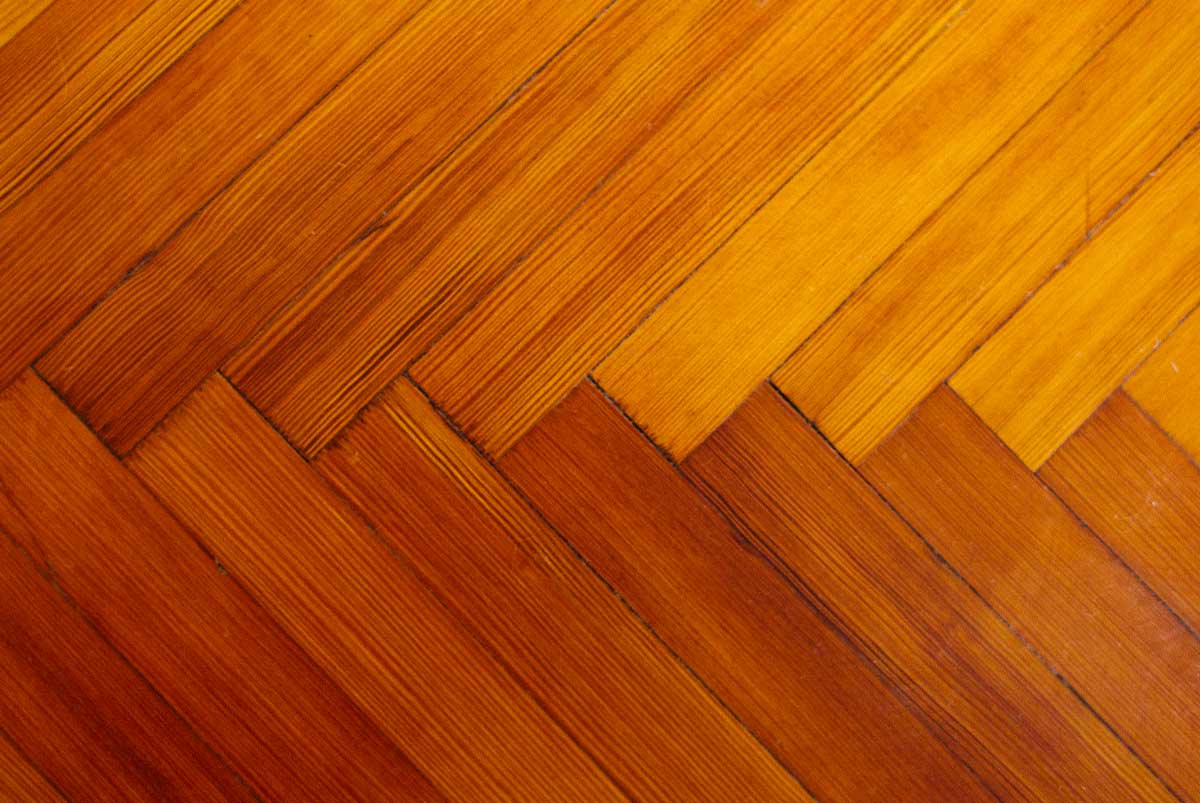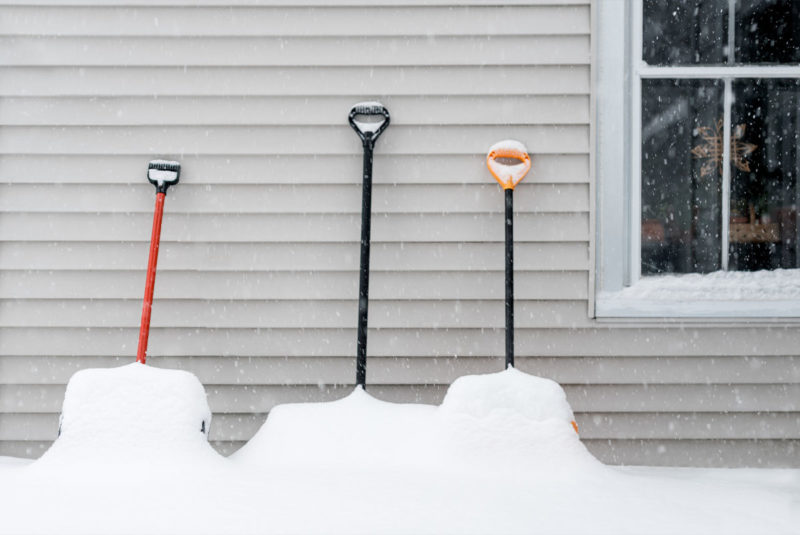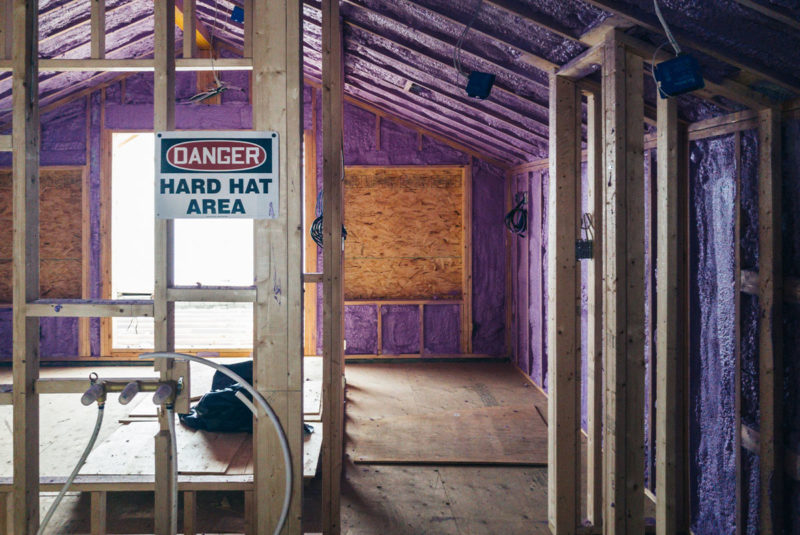When your parents bought their first home, they probably had floors covered with wall-to-wall carpet.
These days, more homes feature hardwood floors instead of carpet. Carpets are easier to install, but a wood floor looks beautiful, is built to last and is easier to clean than carpet or linoleum.
It can also be a great investment. Upgrading to wood floors has been shown to improve the value of a home by around 2.5% providing a return on investment of 70% to 80%.[2]
That said, it can be an expensive investment with the average cost of a new hardwood floor costing thousands of dollars.
But hardwood floors don’t have to be a knotty problem. This guide can help you untangle the potential costs of installing a hardwood floor and show you how to get the most benefit from it.
The Short Version
- The average cost to install a hardwood floor ranges from roughly $6 – $12 per square foot including materials and labor[1]
- Carpets are easier to install, but a wood floor looks beautiful, is built to last and is easier to clean than carpet or linoleum
- Upgrading to wood floors has been shown to improve the value of a home by around 2.5% providing a return on investment of 70% to 80%[2]
How Much Does It Cost To Install Hardwood Floors?
When you talk with a contractor about installing hardwood floors in your home, they will usually give you a quote based on the square footage of the area where you want to install the hardwood floor.
While prices can vary based on the type of materials you use and the labor costs, the average cost to install a hardwood floor ranges from roughly $6 – $12 per square foot including materials and labor.[1]
The average square footage for a home sold in the U.S. in 2020 was 2,333 square feet.[3] Let’s break down the costs you might expect in a typical home:
| Flooring area | Average price range |
| 1 – 10’ x 10’ Bedroom (100 sq. ft.) | $600 – $1,200 |
| 1 – 12’ x 14’ Master Bedroom (168 sq. ft.) | $1,008 – $2,016 |
| 1 – 16’ x 20’ Living Room (320 sq. ft.) | $1,920 – $3,8400 |
| 500 sq. ft. | $3,000 – $6,000 |
| 1,000 sq. ft. | $6,000 – $12,000 |
| 2,000 sq. ft. | $12,000 – $24,000 |
You may be looking at these numbers and wondering why it can cost twice as much to cover the same area. After all, wood is wood. The fact is, a lot of factors can affect the total cost of your home hardwood flooring budget.
What Factors Influence the Cost of Hardwood Flooring?
The cost to install hardwood flooring can vary wildly based on several variables, including:
- Wood type
- Labor costs
- The size of the room or rooms
- Cost of living in your area
- Supply chain
To help you make informed decisions, it’s helpful to break down your costs per square foot. That way you can do an apples-to-apples comparison of the different cost factors.
Hardwood flooring costs
You have a lot of options to consider when deciding what kind of wood to use for your hardwood floors. First, let’s look at what the wood flooring cost would be based on the types of hardwood and wood-alternative flooring that are available.
Traditional hardwood flooring
Solid wood flooring planks are what you usually think of first when considering wood floors. The planks are first installed and then usually finished with a clear varnish, wax or stain to protect the wood.
- Type of wood: Wood flooring comes from a wide variety of trees, each with its own unique color and grain.
- Thickness: Wood planks can come in different thicknesses. The thicker the wood, the more expensive the plank, but the longer it will last.
- Grade: The same type of wood can come in different grades of quality. Clear or select means the wood has a uniform color and is free of knots and other imperfections. Common or rustic grades have more visible imperfections, like knots or wormholes. Common and rustic grades may come with a number ranging from 1 to 3. The higher the number, the less expensive the wood.
Engineered hardwood flooring
A hybrid type of wood flooring. An engineered hardwood floor has a thin (1/16 inch to 1/6 inch) veneer of natural wood on top and a thicker layer of plywood underneath. Engineered hardwood floors are often more expensive than natural wood, but you actually save money on labor costs because it comes pre-finished and it’s easier to install.
Laminate flooring
This isn’t actually wood, it’s a highly durable vinyl material that can mimic the color and texture of a wide range of materials, including wood, ceramic and stone. It’s usually less expensive than natural or engineered wood, is easy to install and allows for easier cleaning, but it may lack something compared to real wood.
Laminate can be a good choice for the kitchen or bathroom because it’s less likely to warp because of moisture.
Installation costs
The next key thing to consider is the cost of hardwood flooring installation. This can vary depending on the labor market in your area and the economy in general. The higher the demand for skilled hardwood floor installation, the higher the cost of labor.
$3 – $5
Average labor cost per square foot to install hardwood flooring[1]
The installation cost may also depend on the type of hardwood floor you plan to install. The harder the wood and the narrower the plan size, the more labor is required. Also, different angled patterns and intricate wood grains may require more time to cut and position the wood, adding to the labor cost.
Finally, if your wood requires a clear finish or varnish after the wood is installed, that will also take more time and require more labor.
One advantage to consider is that engineered wood comes pre-finished and materials like laminate may come with a click-lock installation system or a glue-down installation that lets you install it in less time without tools.
To help you decide what type of wood you want, here’s a helpful breakdown of different wood flooring materials with their average price per square foot.
Approximate Prices of Different Wood Flooring Materials[1]
$9 – $13 per sq. ft.
Durable and stain-resistant. Colors range from soft tan to pale gray with a bold grain.
$5 – $11 per sq. ft.
Not a hardwood, but durable, versatile and can come in a variety of colors and styles.
$4.50 – $9 for 1/16” to 1/12”
$9 – $16 for ⅙” or thicker
Combines real wood with plywood base. Costs more upfront, but is less expensive to install.
$6 – $13 per sq. ft.
Durable with strong grain patterns and lots of color options.
$2 – $6 per sq. ft.
Not a hardwood, but available in a wide range of styles and colors that can mimic actual wood.
$6.50 – $11 per sq. ft.
A durable hardwood that’s good for high-traffic areas, but may be harder to install.
$4.50 – $10 per sq. ft.
Usually the cheapest wood. A softwood, regular pine can scratch and dent more easily than other hardwoods.
$8 – $15 per sq. ft.
A midlevel wood with a deep grain pattern. It’s usually available in red oak or white oak varieties.
$11 – $20 per sq. ft.
A mid-level wood. Hard and durable in dark brown colors. Also available in Brazilian hardwood which is more durable and expensive.
Room size and layout
Before you install, you’ll need to accept the fact that mistakes can happen and not every piece of hardwood will be a perfect fit. So, you’ll probably need to buy a little more material than the size of your room dictates.
In fact, experts like Bob Villa suggest that you add 5% – 10% to your square footage before you order your materials.[4]
So if you’re planning to install wood flooring in a 300 square foot living room, you’ll probably want to order an extra 15 to 30 square feet of material.
Also, keep in mind that the complexity of your room may affect your needs. If your room is a simple square or rectangle, installation should be easy. If the room is oddly shaped or has built-in shelving or counters your installers will need to work around, it will add to the cost.
Cost of living in your area
Different states have different costs of living that can affect your labor costs. Higher labor and delivery costs can add to your total.
Supply chain
The availability of certain types of wood can also affect the cost of your hardwood flooring. For instance, while the cost of living tends to be higher in New York compared to Texas, you may pay less per square foot because there’s more forested area nearby, making the product more available.
Also, increased demand can affect the price of wood flooring. During housing and renovation booms, increased demand for wood and other building materials can increase the price.
For example, in 2021 during the COVID-19 pandemic, lumber prices skyrocketed from $668 per thousand board feet in January to $1,544 in May, more than doubling in just 5 months.[5] This was because of an increased demand for building materials and a lack of supply due to labor and supply chain issues.
Here’s another way to look at it. Let’s say you want to install hardwood flooring that would normally cost $3 per square foot for materials. Because of supply changes during the pandemic, you could suddenly find yourself paying almost $7 for the same wood because it is no longer readily available.
DIY vs. Hiring a Professional: Which Is Better?
While we all want to save money, putting in a hardwood floor (like electrical work) is one home improvement project that may be better left to a professional contractor.
First, consider the actual savings. While materials prices can average from $3 – $7 or more per square foot, the cost of labor usually ranges from $3 – $5 per square foot. Doing it yourself, you may not save that much.
You’ll also need to consider whether you can install the wood properly to avoid any gaps or misalignment of the planks. A poorly installed floor can warp, split or shrink over time, damaging your finish and leaving your perfect floors looking less than perfect. It can also affect the resale value of your home.
Also, installing flooring may require special tools like a pneumatic (air-powered) nail gun designed for flooring nails, a power saw to cut and trim boards, a high-powered floor sander and a waxer to apply the varnish. If you don’t own these tools, you’ll need to rent them.
A professional installer may also be aware of issues with the underlayers that support the floor and can alert you to any problems that could shorten the life of your floor.
If you decide to DIY it, you may want to work with engineered wood flooring or laminate flooring. These materials are designed to be easier to install and don’t need to be varnished.
How Can I Save Money On Hardwood Flooring?
Of course, you can save money while enhancing your home with hardwood floors. We’ve listed a few ways to make the most of what you already have while getting the maximum value from your installation investment.
Refinish hardwood flooring
If your home has existing hardwood floors that look stained and faded, you may not need to install a new floor. Refinishing the floor lets you sand away the existing finish and replace it with new varnish. This can smooth out the wood and restore its shine and durability. All for a lot less money.
Also, you can refinish a hardwood floor multiple times throughout its lifetime, depending on the quality of the wood and thickness of the planks.
Compare quotes from multiple contractors
Take the time to research multiple contractors in your area. Ask for personal recommendations and don’t be afraid to ask contractors to give you a quote.
Be sure to ask how much they charge to install hardwood floors and ask them to break it down based on what they charge for both materials and installation. Then find the best person who can deliver the floor you want at the best price. And remember, getting a quote from a contractor does not obligate you to work with them.
Compromise/opt for cheaper materials
While that expensive oak flooring may look amazing, going for the most expensive wood available may not be the best bet. Consider how long you plan to stay in your home and how long you need the floor to last.
Unless you’re planning to stay for a long time, you can probably make do with an engineered wood that looks good, is scratch and scuff resistant and takes less time to install.
Schedule the work during the slow season
Construction work of every kind tends to be seasonal. In colder climates, spring and summer tend to be the busy seasons with winter season tending to be slow. In warmer climates, fall and winter may be busier with summer work slowing to avoid extreme heat.
Depending on where you live, doing the work during the slow season can save you money because contractors have more time available than they might during the busy season. They may be more willing to reduce costs to secure a contract.
Do (some of) it yourself
While hiring a contractor makes sense for a lot of reasons, you can make it easier for them to do the job in several ways, which could reduce your overall cost of labor.
Clearing out a room before the contractors arrive can help speed things up. You can also offer to help with unloading materials.
You can also assist by doing work on the underlayment. This is the layer that goes under the floor. It’s often made of materials like cork or vinyl and it helps cushion and insulates the floor, absorbs sound, prevents moisture from seeping through and reduces wear and tear. It’s also easier to install and appearances don’t matter as much.
A Look That Lasts a Lifetime
Installing hardwood floors in your home doesn’t just make it look good. It’s a great investment that can improve the value of your home. The trick is to find the right type of hardwood flooring that strikes the right balance between affordability now and value in the long run.




